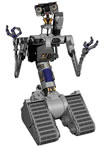Basics -- DPI - Post ID 77590
For web viewing, I see no difference between the same image scanned at
150 dpi vs 300 dpi and saved as JPEG.
I know monitor resolution is low.
Just want to confirm, I'm making note of some basics.
Is a lower (150 dpi) resolution often used to make pages load faster?
Thanks.
150 dpi vs 300 dpi and saved as JPEG.
I know monitor resolution is low.
Just want to confirm, I'm making note of some basics.
Is a lower (150 dpi) resolution often used to make pages load faster?
Thanks.
I understand that higher dpi is mainly for printing.
CoffeeCup... Yeah, they are the best!
Tom is absolutely correct, of course 
No matter how big, fancy or expensive the monitor, it can only display a certain amount of pixels. I did not just look it up, so I'm going to get this wrong, but I think the max is less than 100 pixels so you can set the dpi in an image at 100 and still get the best picture possible for the web. With lower resolutions, if someone were to try to print your image, that is where you will see the difference. Colors will appear faded, and skin tone prints red-ish if the resolution is low.
When using .jpg compression for my web images, if a scale from 1 to 100 (one being real poor and 100 being fantastic) I use a compression of 80. This reduces file size and keeps the image nice to look at on a monitor.
If your scanner allows lower resolution, give it a try at 90 or 100 and I bet you still can't see the difference on a monitor.
No matter how big, fancy or expensive the monitor, it can only display a certain amount of pixels. I did not just look it up, so I'm going to get this wrong, but I think the max is less than 100 pixels so you can set the dpi in an image at 100 and still get the best picture possible for the web. With lower resolutions, if someone were to try to print your image, that is where you will see the difference. Colors will appear faded, and skin tone prints red-ish if the resolution is low.
When using .jpg compression for my web images, if a scale from 1 to 100 (one being real poor and 100 being fantastic) I use a compression of 80. This reduces file size and keeps the image nice to look at on a monitor.
If your scanner allows lower resolution, give it a try at 90 or 100 and I bet you still can't see the difference on a monitor.
E-Learning Specialist
www.mainsites.ca is my website, and yes, some of it is crappy.
www.mainsites.ca is my website, and yes, some of it is crappy.
It's the size (KB) of the image files that affects page loading.
Thanks so much.
Standard setting for most monitors is 96dpi.
"You can't be a real country unless you have a beer and an airline - it helps if you have some kind of a football team, or some nuclear weapons, but at the very least you need a beer." -- Frank Zappa
Visit Spinland Studios: http://www.spinland.biz
Visit Spinland Studios: http://www.spinland.biz
I do most of my web images at 72 dpi...but that is the default for my beloved and trusted (also antique and nicely aged) Paint Shop Pro 7 (oh, I guard that CD with my life...). I also play around with color depth to get the smallest possible image size without losing clarity.
Being on satellite has really opened my eyes to image size. I used to be less concerned because I "assumed" everyone was at a faster speed... But being out in the boonies and having satellite (or dial-up backup) as my only options has made me more aware of the need for smaller image-sizes.
Melanie
Being on satellite has really opened my eyes to image size. I used to be less concerned because I "assumed" everyone was at a faster speed... But being out in the boonies and having satellite (or dial-up backup) as my only options has made me more aware of the need for smaller image-sizes.
Melanie
Can one ever have too many snippets?
www.wehaveasite.com, www.monioriginals.com, www.thetreasurebox.net, www.flymetothemoonballoons.com
www.wehaveasite.com, www.monioriginals.com, www.thetreasurebox.net, www.flymetothemoonballoons.com
Have something to add? We’d love to hear it!
You must have an account to participate. Please Sign In Here, then join the conversation.





